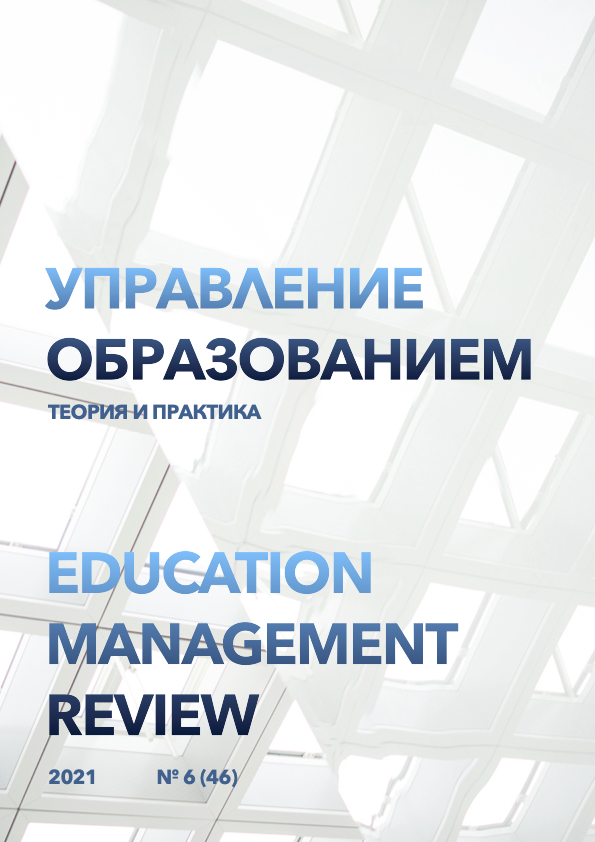The use of information systems to evaluate the scientific activity of university teachers
DOI:
https://doi.org/10.25726/r6946-2540-3679-eKeywords:
Digitalization, education, databases, bibliometryAbstract
In the course of comprehensive digitalization of education, there is an increasing interest in assessing the quality of research activities of scientific and pedagogical workers of higher education institutions, studying the possibilities of open digital information systems, the question arises of determining the effectiveness of scientific research for their optimal presentation in the Russian and international educational space. Recent studies on the attitude of authors to the implementation of the open access policy have noted promising trends and initiatives for the dissemination of research in open access and the use of electronic journals for the dissemination of research results. Modern trends in open access have led to the use of open scientometric systems by data sources to obtain the values of research activity evaluation indicators for the most influential international and Russian ratings, which arouses the constant interest of the management of higher educational institutions and determines the importance of the issue of analyzing the results of scientific activity of researchers of higher educational institutions. The analysis of the research testifies to the positive experience of using open scientometric and bibliometric databases in evaluating the results of research activities of scientific and pedagogical staff of higher education institutions. Among the open information systems for analyzing the results of research activities of scientists and teaching staff, scientists distinguish: open scientometric and bibliometric systems, digital institutional repositories, alternative metrics systems.
References
Abu-Al-Aish A., Love S. Factors influencing students’ acceptance of m-learning: An investigation in higher education // The International Review of Research in Open and Distance Learning. – 2013. – Vol. 14 (5). – P. 82–107. DOI: https://doi.org/10.19173/irrodl.v14i5.1631
Alfalah S. F. M. Perceptions toward adopting virtual reality as a teaching aid in information tech- nology // Education and Information Technologies. – 2018. – Vol. 23 (6). – P. 2633–2653. DOI: https://doi.org/10.1007/s10639-018-9734-2
Apuke O. D., Iyendo T. O. University students’ usage of the internet resources for research and learning: forms of access and perceptions of utility // Heliyon. – 2018. – Vol. 4 (12). – e01052. DOI: https://doi.org/10.1016/j.heliyon.2018.e01052
Cohen A., Soffer T. Academic Instruction in a Digital World: The Virtual TAU Case // Procedia
– Social and Behavioral Sciences. – 2015. – Vol. 177. – P. 9–16. DOI: https://doi.org/10.1016/j.sbspro.2015.02.322
Elphick M. The Impact of Embedded iPad Use on Student Perceptions of Their Digital Capabilities // Education Sciences. – 2018. – Vol. 8 (3). – P. 102. DOI: https://doi.org/10.3390/educsci8030102
Frydenberg M., Andone D. Enhancing and transforming global learning communities with aug- mented reality // Journal of Information Systems Education. – 2018. – Vol. 29 (1). – P. 37–44. URL: http://jise.org/Volume29/n1/JISEv29n1p37.html
Gardener S. K. Conceptualizing success in doctoral education: Perspectives of faculty in seven disciplines // The Review of Higher Education. – 2009. – Vol. 32 (3). – P. 383–406. DOI: https://doi.org/10.1353/rhe.0.0075
Harlen W. Inquiry-based learning in science and mathematics // Review of Science Mathematics and ICT Education. – 2013. – Vol. 7 (2). – P. 9–33. URL: http://grissh.gr/article/55213320d36a369b19000022
Hsu Y.-C. Exploring the Learning Motivation and Effectiveness of Applying Virtual Reality to High School Mathematics // Universal Journal of Educational Research. – 2020. – Vol. 8 (2). – P. 438–444. DOI: https://doi.org/10.13189/ujer.2020.080214
McCallin A., Nayar S. Postgraduate research supervision: A critical review of current practice // Teaching in Higher Education. – 2012. – Vol. 17 (1). – P. 63–74. DOI: https://doi.org/10.1080/13562517.2011.590979
Nejkovic V., Tosic M. Exploring factors for effective use of online information in SPOC within the engineering education // Computer Applications in Engineering Education. – 2018. – Vol. 26 (5). – P. 1457– 1469. DOI: https://doi.org/10.1002/cae.21991
Opriş I., Costinaş S., Ionescu C. S., Gogoaşe Nistoran D. E. Step-by-step augmented reality in power engineering education // Computer Applications in Engineering Education. – 2018. – Vol. 26 (5). – P. 1590–1602. DOI: https://doi.org/10.1002/cae.21969
Ortega-Sánchez D., Gómez-Trigueros I. M. Massive Open Online Courses in the Initial Training of Social Science Teachers: Experiences, Methodological Conceptions, and Technological Use for Sustainable Development // Sustainability. – 2019. – Vol. 11 (3). – P. 578. DOI: https://doi.org/10.3390/su11030578
Roumell E. A. L., Bolliger D. U. Experiences of Faculty with Doctoral Student Supervision in Programs Delivered via Distance // The Journal of Continuing Higher Education. – 2017. – Vol. 65 (2). – P. 82– 93. DOI: https://doi.org/10.1080/07377363.2017.1320179
Shepherd C. E., Bolliger D. U., Dousay T. A., Persichitte K. Preparing Teachers for Online Instruc-tion with a Graduate Certificate Program // TechTrends. – 2016. – Vol. 60. – P. 41–47. DOI: https://doi.org/10.1007/s11528-015-0015-2
Venkatesh V., Morris M. G., Davis G. B., Davis F. D. User acceptance of information technology: Toward a unified view // MIS Quarterly. – 2003. – Vol. 27 (3). – P. 425–478. DOI: https://doi.org/10.2307/30036540




